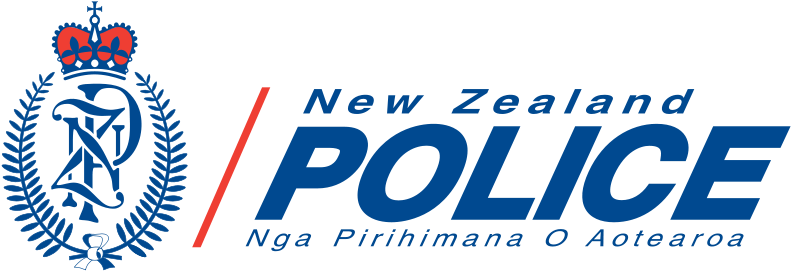Guidelines for operating crime prevention cameras in residential areas
1. Introduction
The objectives of installing crime prevention cameras in residential areas are to prevent and reduce the incidence of crime, identify criminal offenders for the Police and enhance the safety of members of the community using public places covered by the cameras.
2. Privacy
Crime prevention cameras must be operated in a manner that complies with the Privacy Act 1993. The Privacy Commissioner provides summary and detailed guidance material on privacy and camera systems.
3. Application of guidelines
These guidelines apply to crime prevention cameras owned and operated by private residents or resident groups and focused on public places for crime prevention and community safety purposes.
4. Considerations
Prior to installing crime prevention cameras, identify the need and consider whether cameras are the best option.
Individuals considering installing crime prevention cameras should consult their neighbours and if possible obtain their support.
Resident groups should consult their wider community. Consideration should also be given to:
· ensuring cameras will capture clear images in all light and weather conditions e.g. vehicle registration numbers
· how images will be stored and deleted
· the circumstances under which images will be shared with the Police
· ongoing management and maintenance of the camera and related equipment
5. Camera location
Choose locations that will meet the objectives without intruding on the privacy of individuals behaving lawfully.
Consider the potential for crime prevention cameras to be damaged or for damage to private property if cameras are installed on private property.
6. Operating times
Crime prevention cameras will not generally be monitored. Decide whether cameras will operate continuously or be restricted to identifiable time periods when there is a higher likelihood of crime being committed.
7. Operational oversight
Someone needs to be responsible for the ongoing management and maintenance of the crime prevention cameras and related equipment.
Someone also needs to be responsible for:
· liaising with the local authority
· liaising with the Police
· erecting warning signs
· keeping a log of who has accessed images and the reason
· the storage and deletion of images
· maintaining the security of equipment and recorded images
8. Control and operation of monitors and cameras
Owners and operators of crime prevention cameras and related equipment are accountable for their actions.
Only authorised persons should be able to access crime prevention cameras and related equipment.
Monitors should not be viewed unless an incident is occurring or in order to locate images of criminal offenders to share with the Police.
Unless it can be justified (e.g. an offence is taking place) cameras must not track or zoom in on any member of the public.
9. Security and retention of information
All images recorded from crime prevention cameras should be stored securely.
All images not required for evidential purposes should be erased no later than one month after recording.
10. Public awareness of cameras
The Privacy Act 1993 requires that persons from whom personal information is collected are made aware that information is being gathered about them and the purpose for doing so.
The location selected for crime prevention cameras should be clearly signposted to notify the public that a camera is or may be operating.
The local authority should be contacted concerning the placement of signs.
Signs should be placed at the perimeter of the crime prevention cameras coverage and display the message Crime Prevention Cameras Operating or a similar message and be of a size and style that makes them readily visible to people entering the area.
Where a resident group owns and operates the crime prevention cameras, contact information should be included on the signs.
11. Review
The need for crime prevention cameras, including their location and effectiveness, should be considered annually.
The operation of crime prevention cameras and equipment, including security of equipment and recorded images, should be periodically reviewed.
12. Use of information collected
Information collected by the cameras can be shared with Police to assist them to identify criminal offenders.
Police will advise the procedures for sharing recorded images with them required for evidential purposes.
Police may provide an individual whose activities have been recorded access to the recorded images in line with the Police Policy on Crime Prevention Cameras in Public Places.
13. Legal
The Section 6 Information Privacy Principles in the Privacy Act 1993 apply to collecting personal information. Anyone using crime prevention cameras is collecting and handling personal information and must do so in a way that does not breach those principles.
Information Privacy Principle 1 Purpose of collection of personal information may be relevant to the purposes and necessity of collecting the information, and the specific time periods during which the cameras are operating.
Information Privacy Principle 3 Collection of information from subject may be relevant to the size and positioning of signs, and to public awareness.
Information Privacy Principle 4 Manner of collection of personal information may be relevant to the positioning and coverage of the cameras, and the training of operators.
Principle 4 in particular states (paraphrased) that:
“Personal information must not be collected by means that are unlawful, unfair, or intrude to an unreasonable extent upon the personal affairs of the individual concerned.”
From a police perspective, a complaint involving aiming a camera directly into a neighbour’s living area could lead to an offence such as intimidation or criminal harassment.
Information Privacy Principle 5 Storage and security of personal information may be relevant to the storage of data and security arrangements.
Information Privacy Principle 6 Access to personal information may be relevant to access requests from individuals.
Information Privacy Principle 8 Accuracy etc, of personal information to be checked before use may be relevant to lighting, image quality and data accuracy.
Information Privacy Principle 9 Agency not to keep personal information for longer than necessary may be relevant to data deletion arrangements.
Information Privacy Principle 10 Limits on use of personal information may be relevant to limitations on use and authorisation of people who have access to the crime prevention cameras or equipment.
Information Privacy Principle 11 Limits on disclosure of personal information may be relevant to disclosure to other agencies. New Zealand law can be found on the internet site www.legislation.govt.nz











